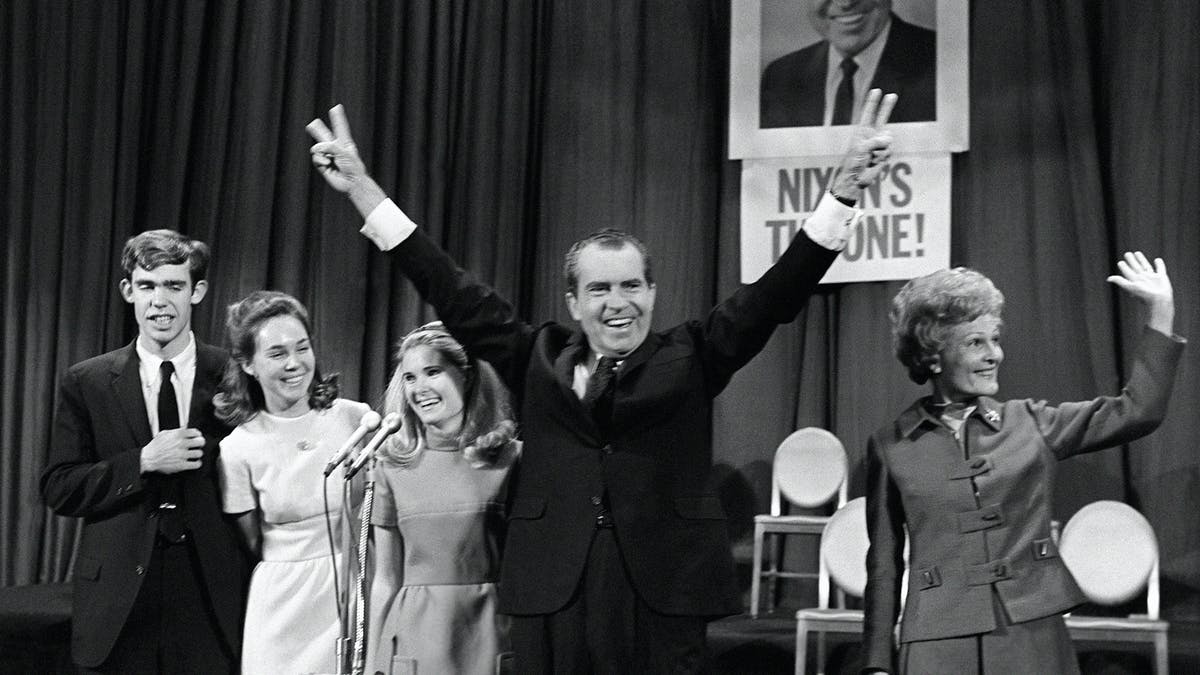
Overwhelming Evidence that the CIA Tripped Up Eugene McCarthy, Murdered Robert F. Kennedy, and Hamstrung Hubert Humphrey—all to Give America Tricky Dick
1. Backdrop of Vietnam War
In late 1964, to prevent North Vietnam and National Liberation Front (NLF—South Vietnam-based guerrilla resistance forces known as Viet Cong) from taking over South Vietnam, President Johnson sent U.S. troops to South Vietnam. The quick victory that was expected did not happen. By the end of 1965 the U.S. military had almost 200,000 troops in South Vietnam, 2,000 U.S. troops had been killed there, and the Army was drafting 35,000 young men every month. There were anti-war demonstrations at many American colleges and universities. By 1967 the country was becoming divided over the war—a war that President Johnson was committed to continuing—and it became the major issue of the 1968 presidential election.
2. Eugene McCarthy Enters the Race
On November 30, 1967, Sen. Eugene McCarthy (D-MN) publicly announced his intention to run as a peace candidate against Johnson in the 1968 presidential race. At this time McCarthy was becoming a hero among college students becauae of his outspoken opposition to the Vietnam War. Curtis Gans and Allard K. Lowenstein, who had started the Dump Johnson movement in 1967, became major figures in McCarthy’s new campaign organization.[1]

3. Tom McCoy
In the mid-1960s Tom McCoy was in charge of CIA political and psychological operations in East Asia. William Colby had been CIA station chief in Saigon from 1960 to 1962. In 1967 Colby returned to Saigon to establish the Phoenix assassination program and he was surely in close contact with McCoy regarding operations, etc. But in November 1967 McCoy resigned from the CIA and tried to join McCarthy’s anti-Vietnam War campaign organization. He told McCarthy’s people many stories about the war’s blunders and absurdities. But McCarthy was suspicious of McCoy, and refused to give him a position in his campaign organization.[2]
4. The Tet Offensive
On January 30, 1968, the Viet Cong and North Vietnamese troops in South Vietnam began the Tet Offensive, an all-out surprise attack over much of South Vietnam against U.S. and South Vietnamese military installations. The Tet Offensive lasted until Feb 23, by which time U.S. and South Vietnamese military forces had defeated the Viet Cong and North Vietnamese troops. The Tet Offensive came as a shock to the U.S. government and the American people, who had not understood that Hanoi and the Viet Cong were capable of such an ambitious military operation. As a result, American public support for the war declined—and support for Senator McCarthy increased among mainstream Democrats.

5. The New Hampshire primary
The nation’s first primary was the New Hampshire primary on March 12. McCarthy’s organization arrived early and canvassed the state with an army of college student campaign volunteers (the “children’s crusade”). On primary day, McCarthy received 42% of the polling-station vote— to LBJ’s 49%. But due to the dilution of the LBJ vote among too many LBJ delegate-candidates, McCarthy won 20 of the state’s 24 Democratic delegation seats! Political analysts were stunned. The message was clear: LBJ was defeatable.
6. RFK announces his candidacy
Robert Kennedy, a Democratic senator from New York, was JFK’s younger brother. On March 16, four days after McCarthy’s New Hampshire success, he announced that he too would run for the presidency as a peace candidate, challenging both McCarthy and Johnson for the Democratic nomination. On March 31, Johnson gave a nationally televised speech which ended with the surprise statement that he would not run for re-election in November.
Two days later, April 2, McCarthy won the Wisconsin primary with 57% of the vote. (Kennedy was not on the ballot.) On April 23, McCarthy won the Pennsylvania primary with 77% of the vote. It was looking very much like McCarthy might win the presidency in November. But in Indiana on May 7, Kennedy won 42% of the primary vote, while McCarthy received only 27%. The Nebraska primary (May 14) was even worse for McCarthy. Kennedy won 52% of the vote and McCarthy only 31%. Kennedy was now a frontrunner.
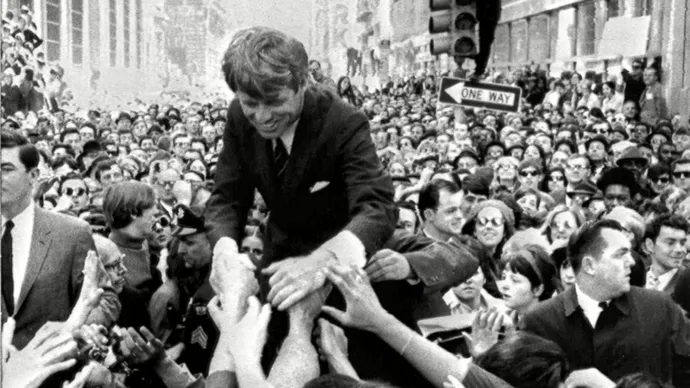
7. MLK’s opposition to the Vietnam War
On February 25, 1967, at the Los Angeles Beverly Hilton Hotel, Dr. King delivered his first speech devoted solely to the Vietnam conflict, which he declaimed as “one of history’s most cruel and senseless wars.” He thus became the first prominent American to stand up against the war, which until then had been generally viewed as the politics only of radical college students and left-wing professors. Less than a week later, on March 2, 1967, Bobby Kennedy delivered an anti-war speech in the Senate that was his first public anti-war statement. On April 4, 1967, King delivered an anti-war speech at Riverside Church in New York City that is often considered his most important anti-war statement. In it he accused the U.S. government of spending more and more on the military and less and less on programs for the poor.
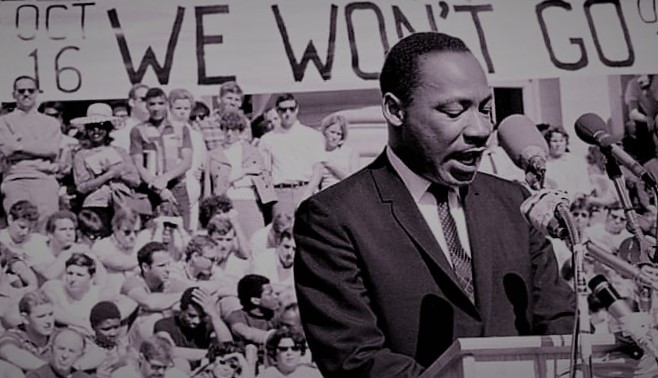
For the remaining year of his life, King struggled mightily to unite the civil rights and anti-war movements. At the National Conference on New Politics in Chicago in late August 1967 (the largest left-wing conference since 1948), King delivered a keynote address in which he declared that the 1968 election must be made “a referendum on the [Vietnam] war” and that “the American people must have the opportunity to vote [militarism] into oblivion.” At the conference there was some support for a King-Spock anti-war presidential run in 1968.
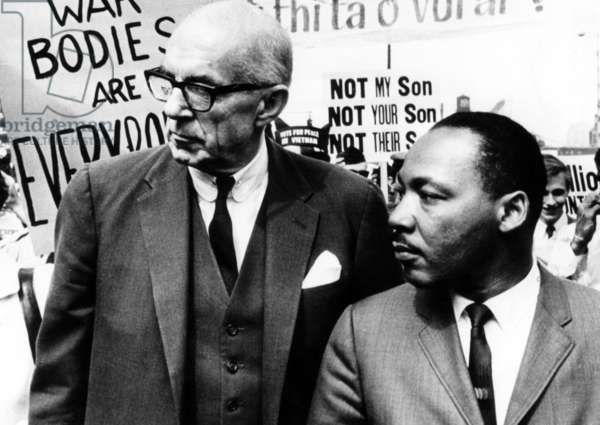
8. The assassination of Martin Luther King
The story of Martin Luther King’s assassination is complex. In a nutshell, James Earl Ray was a developed patsy who was coerced into confessing. The official story is that James Earl Ray shot Dr. King from the second-floor bathroom window of the Brewer boarding house, which was 200 feet from the Lorraine Motel where King was staying. The real assassin shot from the bushes behind the Brewer boarding-house, while a James Earl Ray-lookalike allowed himself to be seen in the boarding-house’s second-floor bathroom-window, then ran and dropped evidence incriminating James Earl Ray.
Boarding-house resident Grace Stephens, who lived in the room closest to the bathroom, said the shot came not from the bathroom but from the bushes below the bathroom window.[3] And Solomon Jones, King’s chauffeur who was in the Lorraine parking-lot beneath where King was standing on the second-floor balcony when the shooting happened, said that immediately after the shooting he glimpsed a man in the bushes with his back to the Lorraine.[4]
But the 1976-78 House Select Committee on Assassinations that re-investigated the assassinations of JFK and Dr. King found reasons to discredit the testimony of Grace Stephens and Solomon Jones. Chief Counsel for the committee was G. Robert Blakey, who had helped the CIA hide and withhold evidence during the Warren Commission investigation of the JFK assassination.[5]
Before and after the assassination, Ray was given money and instructions on where to go by a mysterious “Raoul” and others. Ray’s movements were controlled and everything was set up to point to him. Proof that Raoul was real (not invented as the police and FBI claimed) lies in the fact that Ray based his 1971 appeal application (his only chance for freedom) on his attorney Percy Foreman’s failure to investigate his phone numbers for Raoul.[6]
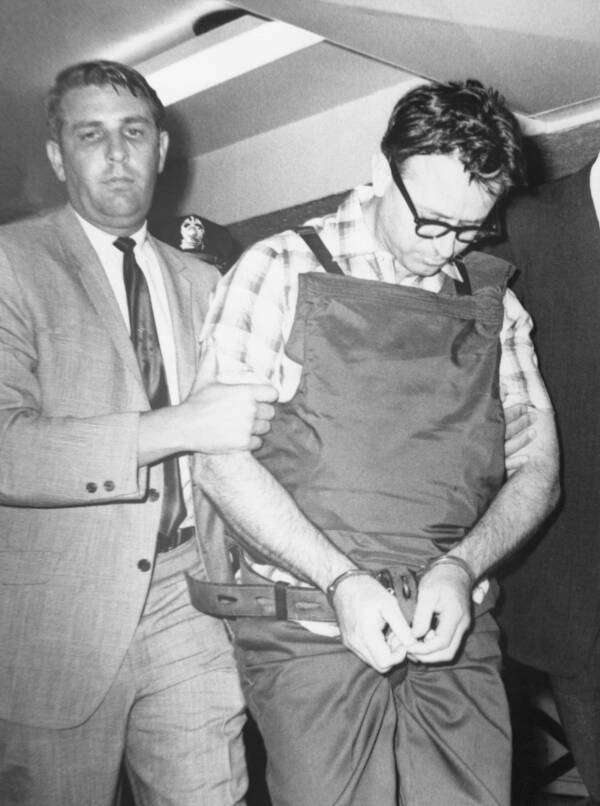
Evidence pointing to the CIA includes the fact that Ray’s aliases almost certainly came from an intelligence agency;[7] that Jules Ricco Kimble testified that he flew Ray to Toronto to meet with a CIA identities specialist; that Ray received his activation call from Raoul on March 16, only a couple of hours after Bobby Kennedy announced his decision to run for president; and that Ray’s lawyer for his 1971 appeal application was Bernard Fensterwald, whose legal career was closely intertwined with CIA domestic operations.
In the 1960s and 1970s the CIA put trainers and advisers in the intelligence units of police departments in many American cities.[8] When in 1976 the House of Representatives voted to establish a committee to re-open the investigations into the assassinations of JFK and Dr. King, the Memphis ACLU filed a petition requiring the Memphis Police Department to preserve the files of its intelligence unit (180 boxes). The files would have revealed any collaboration with the CIA regarding Dr. King, particularly the names of the individuals involved. The court granted the petition, but the files were removed and destroyed one hour before the court order was delivered to Memphis police headquarters.[9]
Excursus A: CIA expertise in influencing elections
CIA expertise in manipulating elections was pioneered by one man—former OSS official Thomas W. Braden.[10] In 1946 Braden co-wrote Sub Rosa, the OSS’s unofficial history, and OSS chief Gen. William Donovan wanted Braden to succeed him as head of OSS.
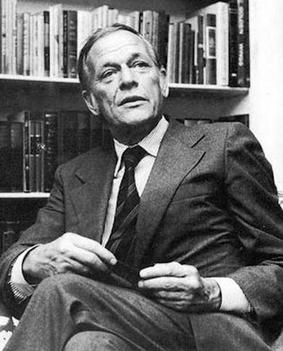
In 1947 and 1948 there were situations in France and Italy which might have allowed the Communists to come to power in those countries. The U.S. government tasked an Army covert operations unit called SSU (whose European operations were run by Tom Braden) with intervening in the strikes and elections in France and Italy.[11] Braden did this by creating “black propaganda,” funding radio and newspaper advertising, printing and distributing campaign literature, organizing political rallies, subsidizing friendly groups, bribing officials, hiring Mafia gangs to assault opposition workers—and likely other tactics that Braden has not admitted.
CIA psychological warfare instructor Paul Linebarger once warned his students, “I hate to think what would ever happen if any of you ever got out of this business and got involved in U.S. politics. These kinds of dirty tricks must never be used in internal U.S. politics. The whole system would come apart.”
In 1951 Braden joined the CIA as (then) Deputy Director Allen Dulles’s special assistant. He soon established the CIA’s International Organizations Division (IO) to oppose the growth of Soviet influence around the world. For the next 20 years, IO provided support for the non-Communist left (NCL) through covert financial aid to non-Communist trade unions, political parties, newspapers, and international organizations of journalists, educators, and students. IO also had much expertise in influencing elections and was heavily involved in supporting the Christian Democrats against the Communist Party in the Italian general elections of 1953, in supporting the growth of the Social Democrats in Germany, and in making the British Labor Party more moderate.[12] Western Europe was prevented from “going Communist” in the years after World War II largely through the election-influencing tactics of Tom Braden.[13]
9. The CIA and McCarthy’s campaign finance organization
a. Controlling a candidate by controlling his finances
Controlling or directing a candidate’s finances can be used to influence the candidate’s positions and activities, and to shape campaign advertising. Major donors may express their concerns to the candidate directly or through finance committee officials. Finance committee officials are also in a position to influence or suggest to the donors certain concerns and requests that are then passed on to the candidate as being from the donors.
b. CIA allies and McCarthy’s campaign finance organization
On April 21, “Citizens for McCarthy” was established in New York City as McCarthy’s new fundraising organization. “Citizens for McCarthy” was headed by Tom Finletter, a close associate of Cord Meyer. Meyer was a friend of Tom Braden and ran IO after Braden left in 1954. In 1968 he was in charge of much of the CIA’s anti-Soviet operations worldwide—not likely a supporter of McCarthy.

Tom Finletter [Source: wikipedia.org] 
Cord Meyer, Jr. [Source: arlingtoncemetary.net]
Another member of “Citizens for McCarthy”’s board of directors was Benjamin Buttenwieser, who was closely associated, both socially and professionally, with John J. McCloy, who helped create IO’s secret funding structure. Buttenwieser’s wife Helen, head of the New York Legal Aid Society, was at the center of the U.S. government’s investigation into whether suspected Soviet spy Alger Hiss had any undetected associates at the State Department—and McCloy once said that journalists digging around her legal defense of Hiss threatened to expose some of the government’s most sensitive operations. Buttenwieser and McCloy were involved in secret government security, not liberalism, and Buttenwieser’s role as a director of “Citizens for McCarthy” was almost certainly intended to undermine McCarthy.
c. Bringing Tom McCoy into McCarthy’s campaign organization
For some time friends and donors had been urging McCarthy to re-organize his campaign. On May 15-16, he met with a five-man delegation, including Tom Finney, Tom McCoy (that Tom McCoy, who was also Finney’s brother-in-law and chief aide), and Washington lobbyist Larry Merthan. The delegation pushed McCarthy into making certain changes. On May 18, McCarthy removed Curtis Gans from supervision of the campaign and installed Tom Finney.
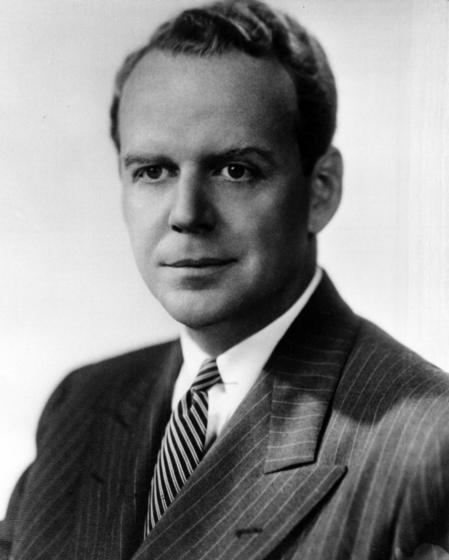
Finney was the law partner of Clark Clifford, the Secretary of Defense in 1968 who had written the CIA’s charter in 1947. Larry Merthan had been a CIA intelligence officer in West Germany in the 1950s and served on the staff of the Franz Lieber Foundation, a CIA front that was used to funnel money to anti-Communist groups.[14] Thus three of the five men in the delegation that met with McCarthy on May 15-16 to re-structure his campaign organization were former (or current) CIA operatives.
10. The assassination of Sen. Robert F. Kennedy
As with Dr. King, the story of Bobby Kennedy’s assassination is complex. Officially, RFK was shot by Sirhan Sirhan on June 5, 1968, as he was leaving Los Angeles’s Ambassador Hotel through the kitchen pantry. He died 26 hours later, never regaining consciousness. In a nutshell, Sirhan Sirhan was a developed patsy who does not even remember the shooting and was probably under hypnosis at the time.
The real assassin was the “second gunman” seen by several witnesses at the scene. Several witnesses also saw Sirhan’s gun emit “tongues of fire” characteristic of slugless cartridges—doubtless so that Sirhan would not shoot the second gunman.[15] Witness Sandra Serrano saw two men and a woman climb up the kitchen emergency exit before the shooting, and one man and a woman climb down the exit after the shooting. Testimony regarding the second gunman, slugless cartridges, and people going up and down emergency exits was omitted from the official report, which considered Sirhan the sole assassin.
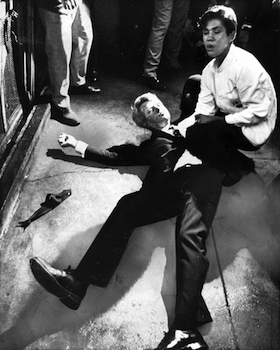
Evidence pointing to the CIA and to conspiracy and cover-up includes the following:
1) LAPD’s investigation into Bobby Kennedy’s assassination, called Special Unit Senator, was run by Lt. Manuel Pena. He and his assistant, Sgt. Enrique Hernandez, had recently come to LAPD from an ultra-secret CIA unit inside the Agency for International Development. One of the unit’s specialties was teaching assassination techniques to foreign intelligence and security officials.[16] The report they produced omitted all evidence of a second shooter.
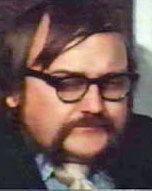
2) Dr. William Joseph Bryan was perhaps the world’s foremost hypnosis expert, whose work included hypnotizing serial murderers to determine their motivation, such as “Boston Strangler” Albert DiSalvo. Bryan allegedly developed pre-programmed assassin techniques for the CIA, such as a “robot assassin” acting under post-hypnotic suggestion, as part of the CIA mind-control project MK/ULTRA. Bryan was reportedly the technical consultant on hypno-assassination for the film The Manchurian Candidate. Dr. Bryan told two of his female friends in Beverly Hills that he had worked with Sirhan. This would explain why Sirhan’s notebooks contained many references to Albert DiSalvo, who was Dr. Bryan’s most famous patient.[17] The 1976-78 House Select Committee on Assassinations subpoenaed Dr. Bryan to testify, but he died two days before he could be questioned by the House investigator. He died from a drug overdose administered via syringe in a location that he would not likely have been able to do himself.
3) After his conviction Sirhan was sent to San Quentin prison, where psychiatrist Dr. Eduard Simson-Kallas determined that he had been programmed.[18]
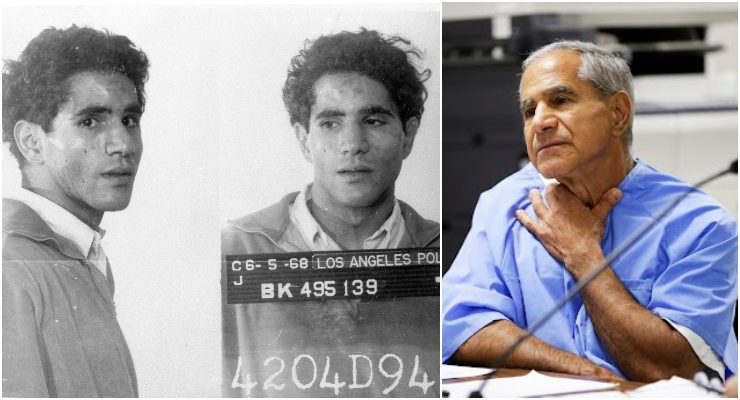
4) A year after the investigation concluded, an inventory revealed that all of the physical evidence in the Bobby Kennedy assassination, including all the pantry tiles and panels, had been destroyed in the County incinerators and nothing remained. Likewise, all 2,400 original police crime-scene photos. And, likewise, with the 3,470 witness interviews done by Special Unit Senator. All the interviews were tape-recorded and there were no written transcriptions. The inventory revealed that all but 300 of the 3,470 witness interviews were missing—including all of the most important ones. Amateur photographer Scott Enyart had filmed the celebration at the Ambassador, including the shooting in the pantry. His three rolls of film were taken by the LAPD shortly after the shooting, and roll number three (taken in the pantry) was never returned.[19] It would have shown who did what.
5) The 1976-78 House Select Committee on Assassinations re-investigated the assassinations of JFK and Dr. King, but not Robert Kennedy. Was it because a re-investigation would likely have established the role of a second gunman in RFK’s assassination and revealed massive evidence of a cover-up in the original investigation?
Two additions: First, after RFK announced his candidacy, Tom Braden and his wife Joan joined the board of RFK’s California campaign organization. Joan Braden traveled with RFK while he was campaigning nationwide. On the day of the California primary, June 4, Joan Braden lent RFK her car for him to travel around Los Angeles. After RFK was shot on June 5, Joan Braden and Theodore White (The Making of the President series) baby-sat RFK’s children at the hotel so that RFK’s wife Ethel could be with him at the hospital.
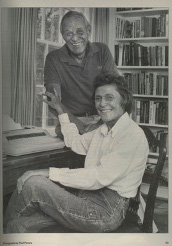
Second, in addition to RFK’s anti-Vietnam War position, the CIA had another motive for eliminating him: If elected, Bobby Kennedy would have opened a new investigation into his brother JFK’s assassination—which would likely have resulted in greatly restructuring the CIA and sending many of its top officials to prison.
Excursus B: The CIA’s Charter and Domestic Operations
The National Security Act of 1947 re-organized the U.S. military and created the CIA, and Section 102 is often called “the CIA’s charter.”[20] Section 102 was drawn up by the law firm of President Truman’s closest adviser, Clark Clifford. The CIA’s duties are listed in Subsection d, Paragraphs 1-5: “(1) to advise the National Security Council in matters… (relating to) national security… (2) to make recommendations to the President through the National Security Council… (3) to correlate and evaluate intelligence relating to the national security, and provide for the dissemination of such intelligence within the Government using where appropriate existing agencies and facilities.”
In deference to FBI Director J. Edgar Hoover and civil libertarians, Paragraph 3 includes a statement that “the Agency shall have no police, subpoena, law-enforcement powers or internal-security functions.” This appears to restrict the CIA’s duties to analyzing and passing on intelligence collected by other intelligence agencies. This was apparently meant to outflank J. Edgar Hoover and to facilitate the act being approved by Congress. Paragraph 3 also appears to forbid the CIA from engaging in domestic operations and internal security activities (the realm of the FBI) and to permit only administrative, supply and training activities inside the United States. Paragraph 3 further appears to forbid the CIA from engaging in foreign intelligence-gathering and covert operations.
However, an elastic clause in Subsection d, Paragraph 5, permits the Agency to perform “such other functions and duties related to intelligence affecting the national security as the National Security Council may from time to time direct.” This opens the door for the CIA to perform covert operations, including domestic operations. In the 1975 Church Committee hearings Clark Clifford confirmed that this clause was intended to permit covert actions by the CIA.

From the beginning, the CIA carried out domestic activities under the direction of the National Security Council. These activities were made deniable by having them carried out through third parties (proxies), such as Maheu Associates, and other groups and individuals. In his autobiography, Next to Hughes, Robert Maheu states that, when he began his investigative firm in 1954, “almost immediately, I began working for the CIA” and that the CIA wanted him “to perform ‘cut-out’ operations for the Agency—i.e., those jobs with which the Company could not be officially connected.”
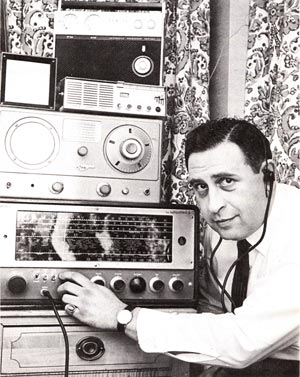
America’s leading wiretapper from the 1940s to the 1960s was Bernard Spindel. In his autobiography, The Ominous Ear, Spindel reproduces the 1951 letter from the CIA rejecting his application for employment. Beneath it Spindel put the caption “The cream of the jest!” because in fact he had done many domestic jobs for the CIA. The reason that the CIA didn’t hire him was probably so that, if he were caught, the CIA could deny that they were involved.
Domestic operations, even minor operations, were kept secret in order to prevent public pressure to restrict or abolish the Agency. Most of the American public believed that, like the U.S. military, the CIA was completely loyal to the President and to Congress. The CIA’s involvement in the 1968 election was exactly the sort of thing that, if it had become public at that time, would have caused a large part of the American public to support abolishing the Agency.
11. The break-up of RFK’s campaign staff after his assassination
a. Larry O’Brien
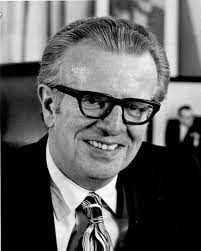
Bobby Kennedy’s campaign manager was Larry O’Brien. After Bobby Kennedy’s assassination, he intended to go to work for Vice President Hubert Humphrey. Enter Robert Maheu. Maheu ran a detective agency, Maheu Associates, that had only two clients, the CIA and the National Security Council, and had done numerous domestic jobs for them. One of those jobs was to counter Harold Stassen’s attempt at the 1956 Republican National Convention to remove Nixon as the vice-presidential candidate.
Because Hughes Enterprises was a major contractor for NASA and the U.S. military, but Howard Hughes himself was totally incapacitated, the U.S. government tasked Maheu with running Hughes Enterprises. He did this in a way which gave the appearance that Hughes was really in charge, but was desirous of great privacy. In June 1968 Maheu succeeded in getting O’Brien to go to work for “Hughes” beginning in August—removing him from working for McCarthy or Humphrey in the latter part of the election. In his autobiography Next to Hughes, Maheu claims that initially “Hughes” sought to hire Bobby Kennedy’s entire campaign organization.[21]

b. Angie Novello
Parallel to this was the post-assassination hiring of RFK’s personal secretary, Angie Novello, by Washington lawyer Edward Bennett Williams. Novello was RFK’s “right-hand man” and played an indispensable role in his campaign. Luring Ms. Novello took considerable effort on Williams’ part since Novello was deeply devoted to RFK and had to be convinced by Williams that his former feud with Kennedy had been settled amicably.[22]
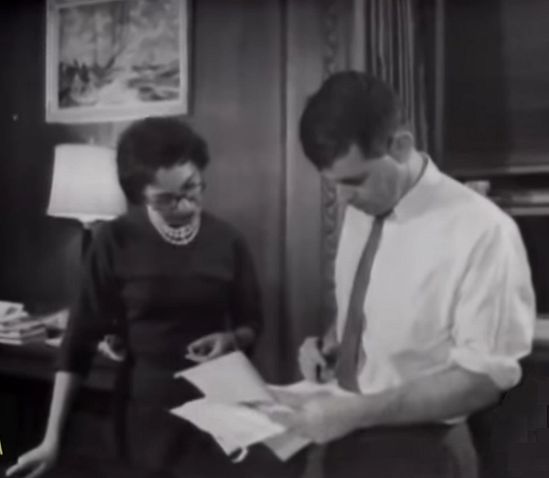
Williams was a close friend of the CIA. In 1956 he partnered with Robert Maheu in the Icardi investigation, which was an issue in the 1956 Italian election. In the 1970s he shared a small office building with Intertel (another CIA-front security operation) and was a member of the Foreign Intelligence Advisory Board (a civilian oversight board for monitoring the CIA that was actually staffed with CIA allies). In the early 1970s he was the attorney for CIA Director Richard Helms. Williams was offered the post of DCI (CIA director) in 1975 and 1987. He declined both times.
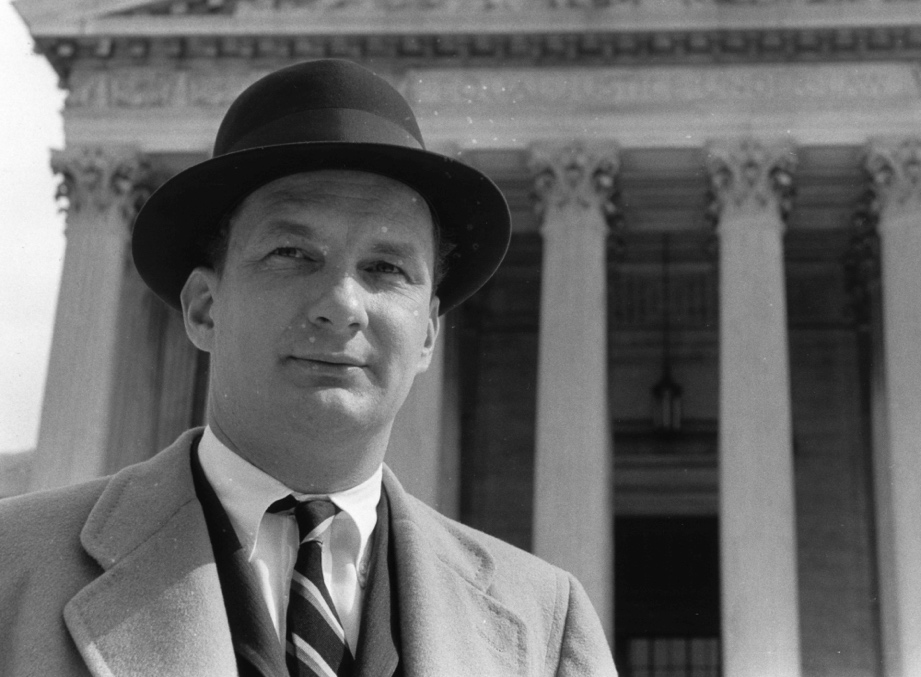
c. Ford Foundation grants
Another event that was apparently intended to divert eight key RFK campaign staffers (including speechwriter Adam Walinsky and press secretary Frank Mankiewicz) from working for McCarthy or Humphrey was the awarding of Ford Foundation grants to those RFK staffers after the assassination to enable them to “travel and study.” The grants were personally approved by Ford Foundation President McGeorge Bundy. In the early 1950s, Mac had worked closely with the CIA in arranging CIA penetration of the academic world. Mac’s brother William served in the CIA 1951-61 and was the CIA’s working liaison to the NSC.[23]

McGeorge Bundy [Source:capitalresearch.org] 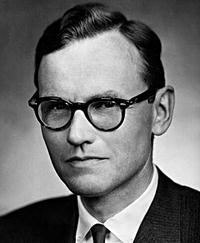
William P. Bundy [Source: mishalov.com]
d. Frank Mankiewicz
Frank Mankiewicz was Bobby Kennedy’s press secretary from 1966 to 1968. He played a key role in RFK’s presidential campaign and was known for his skillful handling of televised press conferences—a valuable asset. The Ford Foundation grants did not immediately divert Mankiewicz from the remainder of the 1968 election campaign.
In late August he participated in the Democratic National Convention in Chicago. About this same time (August 1968) Tom Braden, who created the CIA’s election-manipulating techniques in the late 1940s, convinced Mankiewicz to collaborate with him in writing a syndicated political column. The column launched in fall 1968 and came to be carried in 70 newspapers nationwide.
Beginning at that same time, Mankiewicz and Braden also anchored the 11 o’clock news on Washington, D.C.’s WTOP radio station, and hosted a show called “Seven Days” that ran once a week. These activities took Mankiewicz out of the remainder of the 1968 election.[24]

12. Richard Nixon was the only viable pro-Vietnam War candidate
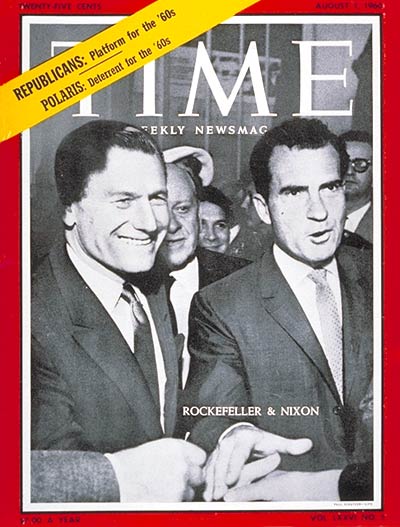
While Democratic candidates favored pulling out of Vietnam, Republican candidates were divided on the issue. Liberal Republicans like Nelson Rockefeller and George Romney (Mitt Romney’s father) promised a quick withdrawal, while conservative Republican Richard Nixon was committed to continuing the war. Nixon had been a staunch anti-Communist when he was vice president under Eisenhower. Nixon was the only viable pro-war candidate and was surely seen by the CIA as the only hope for continuing and winning the Vietnam War.
Nixon’s main Republican rival was Nelson Rockefeller, who entered the race in July. As governor of New York, Rockefeller instituted relatively liberal policies regarding abortion, civil rights, drug rehabilitation, and conservation (though his drug laws were notoriously harsh). As a moderate Republican and Keynesian, Rockefeller felt that the government should address inner-city poverty with programs to provide better education, low-income housing, and equal job opportunities. Nixon, on the other hand, supported conservative policies and was known as a “law and order” candidate who supported strong responses to the Black riots and student demonstrations of the 1960s.
13. The CIA and Nelson Rockefeller’s campaign finance organization
Tom Braden was the CIA official who in 1950 established the CIA’s International Organizations Division (IO) to provide secret funding to influence politics and elections across the globe against Communism. Although Braden was a long-time friend of Rockefeller (they were actually “frenemies” in competition for the same woman, Joan Ridley), in 1968 they were on opposite sides regarding the Vietnam War. But in summer 1968 Braden joined the board of Rockefeller’s national finance committee.
Of the board’s five members, two others were also involved in CIA secret political funding: Jock Whitney and Arthur Dean. Jock Whitney, a Broadway producer, permitted his personal foundation, the Whitney Trust, to be used as a conduit for CIA funds. Whitney’s cousin and close friend was Tracy Barnes. Barnes, a few years after the war, served in OPC, a covert operations unit that became part of the CIA in 1950.
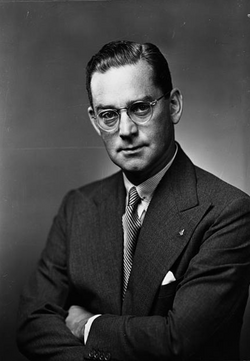
Jock Whitney [Source: findagrave.com] 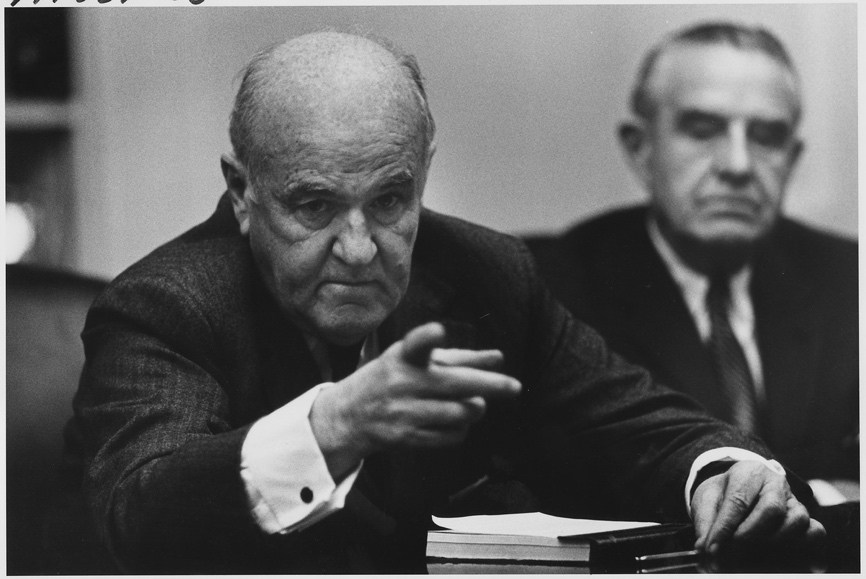
Arthur Dean [Source: wikipedia.org] 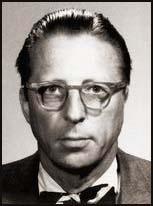
Tracy Barnes [Source: spartacus-educational.com]
Arthur Dean had been a partner at Allen Dulles’s law firm—Sullivan and Cromwell—since 1953 and was Finletter’s co-trustee at the Asia Foundation, an IO organ. It is likely that Rockefeller did not realize the CIA’s participation in the election and allowed these men, whom he had long known, to oversee his campaign finances because he viewed them as friends and allies.
14. The CIA secretly contributes to Nixon’s campaign
Greek-American businessman Thomas Pappas had an oil, steel and shipping empire in Greece. His Pappas Charitable Trust was a secret CIA funding conduit and he boasted of being “an old CIA hand.”
In 1968 over a half-million dollars was contributed to Nixon’s campaign supposedly from Tom Pappas. In 1972 Elias P. Demetracopoulos, a Greek journalist and dissident who lived in Washington, D.C., during the junta years, spoke about the Pappas contribution. He told DNC Chairman Larry O’Brien that, in 1968, the Greek junta funneled more than $500,000 to the Nixon campaign. The money had come from the CIA to Greece’s feared secret police and intelligence agency KYP (which the CIA had created), and KYP’s strongman Michael Roufogalis passed the money to Thomas Pappas, who contributed it under his own name. And in 1976, in secret testimony before the House Intelligence Committee, Henry J. Tasca, U.S. Ambassador to Greece during the junta years (1967-1974), confirmed that the Greek dictatorship had funneled money to Nixon’s 1968 campaign.[25]
![Henry J. Tasca, Deputy for Economic Affairs] - NARA & DVIDS Public Domain Archive Public Domain Search](https://covertactionmagazine.com/wp-content/uploads/2022/05/henry-j-tasca-deputy-for-economic-affairs-nar.jpeg)
Henry J. Tasca [Source: nara.getarchive.net] 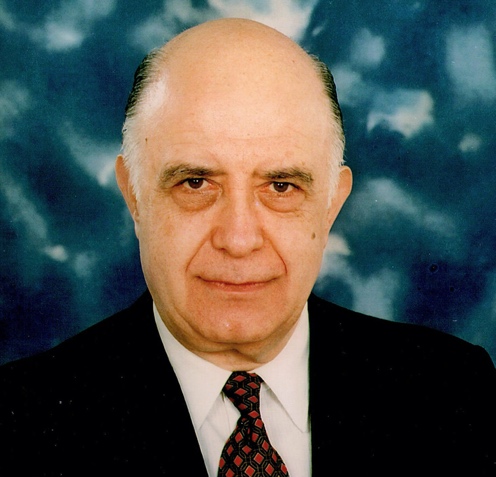
Elias P. Demetracopoulos [Source: nytimes.com]
15. The Republican National Convention and the Liberty City riot
The two main candidates at the 1968 Republican National Convention in Miami Beach were Richard Nixon, who supported the Vietnam War, and Nelson Rockefeller, who opposed the war. Neither arrived at the Convention with enough votes to win on the first ballot, scheduled for 7:00 p.m. on August 7. But Rockefeller was a good negotiator and was expected to gain enough support from minor-candidate delegates to win on the second ballot.
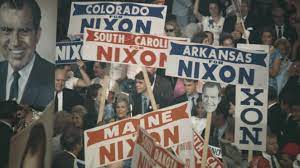
[Source: npr.org] 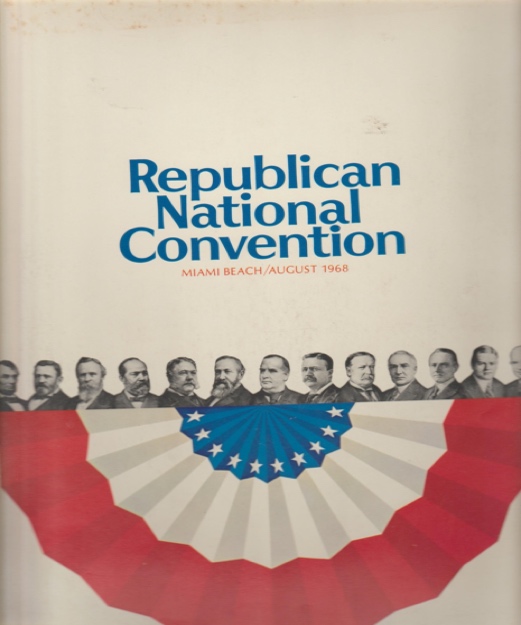
[Source: amazon.com]
A riot broke out in Miami’s largest Black neighborhood, Liberty City, six miles from the Convention site, at 1:00 p.m. on August 7, six hours before the balloting began. The riot quickly grew quite large and was widely reported on radio and TV that afternoon and evening. Rockefeller supported government assistance to inner-city Blacks, while Nixon took a law-and-order position on Black riots. The riot influenced almost 80 delegates to change their votes to Nixon, who won on the first ballot. Rockefeller lost the opportunity to negotiate for a second-ballot win.
The riot continued for two more days, killing three and seriously injuring dozens, and destroying a large part of Liberty City’s main business and shopping district. After the riot a group called the Miami Study Team was organized to conduct an official investigation into the riot. The riot was Miami’s first riot and its timing, a few hours before the Convention’s voting, was suspicious. The Miami Study Team produced a report, the Miami Report, that concluded that there was no connection between the riot and the Convention.
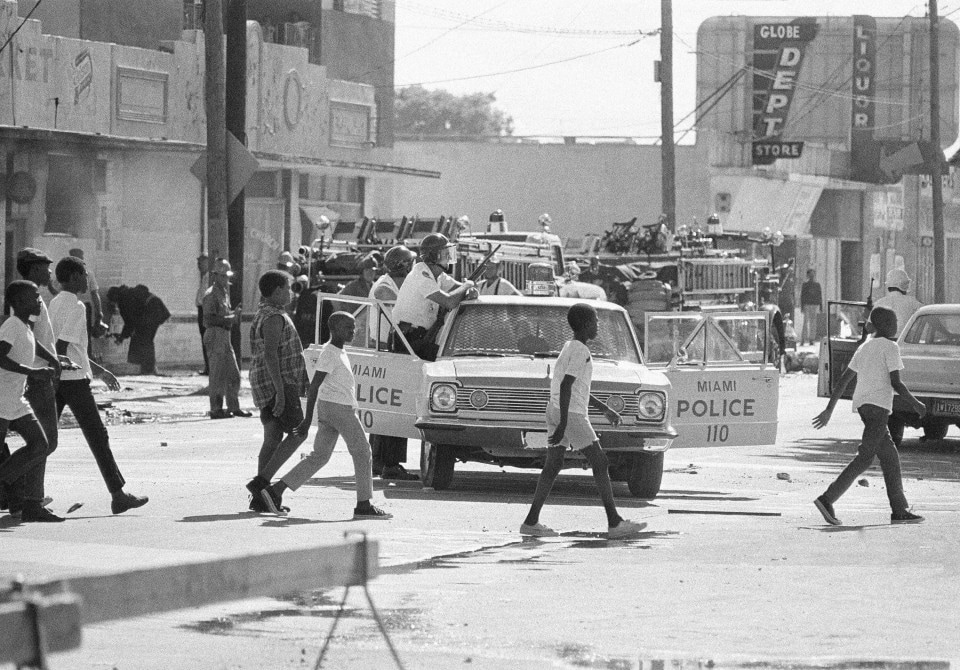
But there is a problem with the Miami Report. The Report’s preface stated that, because of “discrepancies between various accounts… we have not undertaken to set forth varying accounts of the same episode. We have resolved them as best we could in discussion with our staff, and presented only our conclusions.” The Miami Report gives an account of the first day of the riot, especially regarding how and when the riot started, that is very different from that given in Miami’s two major newspapers, the Miami Herald and the Miami News.
The Miami newspapers said that the incident that started the riot (the Wallace-sticker car incident) happened shortly after 1:00 p.m. and that the riot was quite large by mid-afternoon.[26]
But the Miami Report said there was no rioting in the afternoon, only “pebble-throwing” by teenagers. And the Miami Report placed the Wallace-sticker car incident at 7:00 p.m.—too late to have influenced the voting at the Convention.[27]
The Miami Report also omitted evidence (reported by Miami newspapers) that the riot may have been manufactured. It looks like the Miami Report’s account was concocted to justify its conclusion that there was no connection between the riot and the Convention.
The Miami Study Team that wrote the Miami Report was led by two men—Louis Hector and Paul Helliwell—who had served together in OSS in WWII and were life-long associates,[28] and several other Miami Study Team members were employees of Helliwell’s Florida law firm.
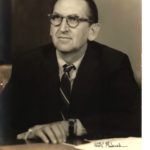
But Helliwell was not primarily a lawyer. He spent most of his life with the CIA as perhaps their foremost expert on the secret transfer of guns, drugs and money.
In the late 1940s and early 1950s he was the CIA official in Thailand who arranged for the secret shipment of weapons to Thailand’s national police force, which was involved in drug-trafficking that also benefitted Chiang Kai-shek. In 1950 he (and China Lobby founder Tom Corcoran) persuaded the CIA to purchase half-ownership of Civil Air Transport (which was later renamed Air America). He lost his Thailand posting in 1954 when the Eisenhower administration learned that the CIA office in Bangkok was “a mess of opium-trading.”
Returning to Florida, he served as the financial chief for the Bay of Pigs operation. The CIA had made an arrangement with French Connection mafioso Santo Trafficante by which Trafficante would provide the 1,200 “volunteers” for Brigade 2506.
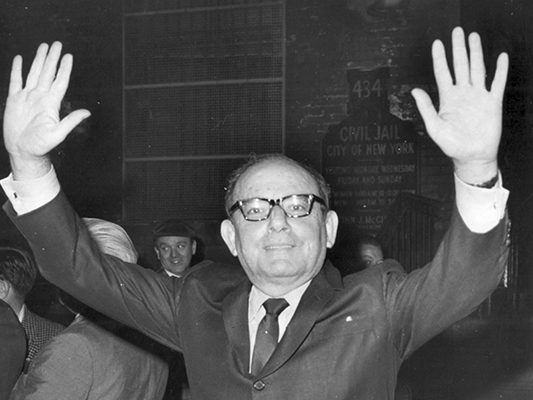
One of the things that the CIA did in return was that, in 1962, Helliwell created the world’s first two offshore drug-banks to service Trafficante’s drug operations and CIA anti-Castro operations. Later he created two more offshore drug banks. Helliwell was involved in the CIA’s acquisition of the cargo airline Southern Air Transport in 1960 for use in supporting anti-Castro operations and helped pattern it after Air America. In the late 1960s he showed Laotian opium-traffickers how to use the portable heroin processors developed by the CIA’s Technical Services Division.
Helliwell was the primary architect of the CIA’s “heroin pipeline” from the Golden Triangle to America’s inner cities. He was one of the people who did the most to create the inner-city heroin epidemic that has killed so many young people, especially young Blacks. And he was a career CIA official who specialized in doing sensitive CIA operations secretly.[29] His role in investigating the 1968 Liberty City riot and writing the Miami Report makes no sense—unless the Liberty City riot was a secret CIA operation.
16. The Democratic National Convention
The Democratic National Convention was held in Chicago from August 26 to August 29. Vice President Hubert H. Humphrey entered the race on April 27, inheriting LBJ’s 561 delegates. Kennedy’s assassination on June 5 left his 393 delegates uncommitted. Support within the Democratic Party was divided between Senator McCarthy and Vice President Humphrey.
The Democratic Convention was the scene of massive protests on the streets of Chicago. And crackdowns by Mayor Daley’s 11,000 city police, 18,000 Illinois National Guard troops, and 6,000 federal troops—all broadcast on national TV. In the end, Humphrey won the nomination with 1,759 votes to McCarthy’s 601. While McCarthy was a very strong opponent of the Vietnam War, Humphrey’s public position was less clear.
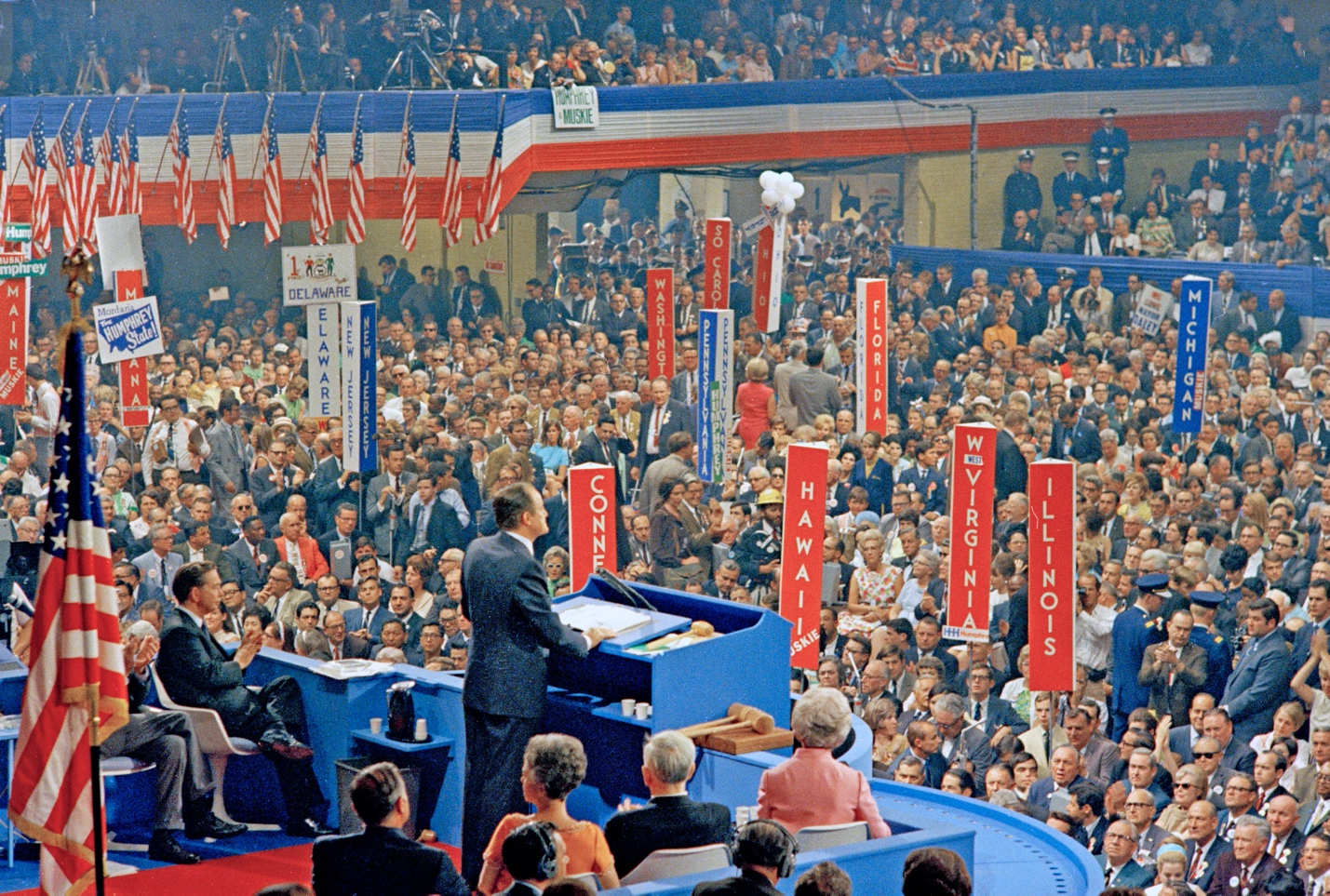
17. Humphrey’s position on the Vietnam War
In February 1965 Humphrey sent LBJ a memorandum advising that now was a good time to “cut your loses” and begin pulling out of Vietnam. Like Dr. King, Humphrey was greatly concerned about the large amount of money being spent on the war instead of on domestic social programs. LBJ was quite angry and said that Humphrey should “stay out of the peacekeeping and negotiating field” on Vietnam. Thereafter, Humphrey publicly supported LBJ on the war.
Although at the 1968 Democratic National Convention Humphrey did not declare himself a peace candidate and opposed putting a peace plank in the party platform, he said in his acceptance speech that “the policies of tomorrow need not be limited to the policies of yesterday.” It appeared that if Humphrey were elected, he might take a softer position on the war and could not be counted on to pursue an outright victory.
18. The Paris peace talks cause Humphrey to rise in the polls
With the Democratic Party badly divided during the late August convention, Humphrey trailed Nixon significantly in September. In October, after Humphrey announced that he would halt the bombing if he were elected, his campaign began to gain momentum. On October 10, LBJ broke his election neutrality and delivered a radio speech that supported Humphrey. Humphrey began to rise in the polls, trailing Nixon by only 5% in the poll released October 18, with 40% for Nixon and 35% for Humphrey (and 20% for George Wallace, who was running on his own party).
Since June the Johnson administration had attempted to arrange peace talks in Paris. By October the North Vietnamese had accepted and the talks were scheduled to begin November 2, three days before the election (which LBJ had calculated to help Humphrey). On October 31, Johnson announced a halt to the bombing of North Vietnam effective the next day. This would have helped Humphrey, whose poll numbers were then edging very close to those of Nixon and would have surpassed him by several percentage points on election day if the climb rate continued. The New York Daily News’s October 24 poll placed Humphrey only two points behind Nixon and the Harris poll showed him ahead of Nixon (43% to 40%) on November 2. If things continued that way, it appeared that Humphrey would win the election.
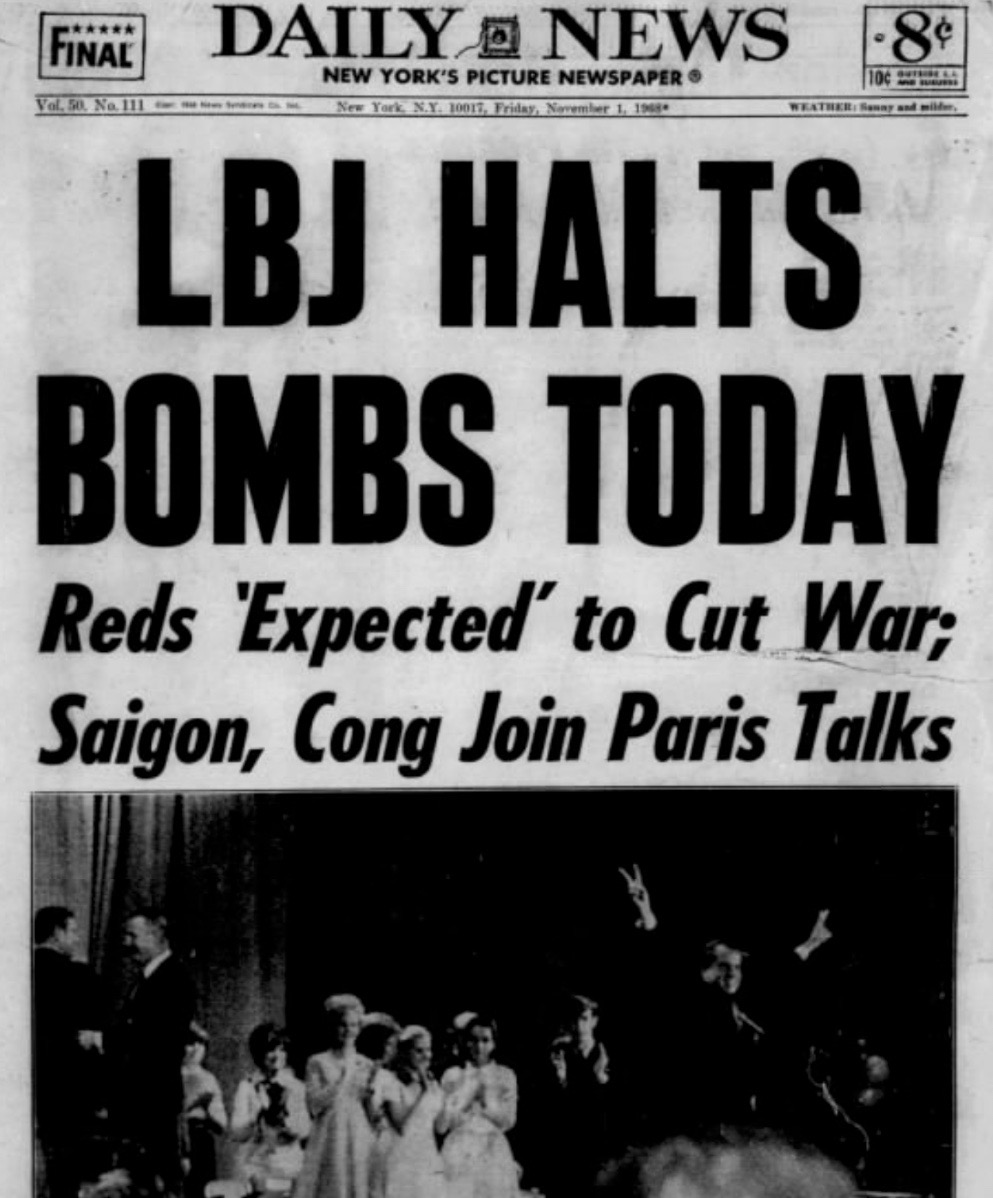
19. Anna Chennault and the Paris Peace talks
a. Anna Chennault’s CIA connections
During World War II General Claire Chennault organized the Flying Tigers to help Chiang Kai-shek and his KMT army fight against the Japanese in China. After the war ended in 1945 the civil war between the KMT and the Chinese Communists resumed, and Chennault created Civil Air Transport to fly weapons and supplies to Chiang Kai-shek’s forces. In 1949 the Chinese Communists won the civil war and CKS and the KMT retreated to Taiwan. Much of CKS’s financial support came from “Big-ear” Tu, Shanghai’s biggest drug-lord. After the Chinese Communists took control of the opium-producing region in southwest China in 1948, Tu began getting his opium from Thailand, where the opium trade was run by Gen. Phao. After the Chinese Communists took Shanghai in 1949, Tu moved his drug operation to Hong Kong and Taiwan. In the late 1940s CAT supported CKS and General Phao by flying weapons to Thailand and to KMT military forces, and flying opium from Thailand to Hong Kong and Taiwan to pay for those weapons.
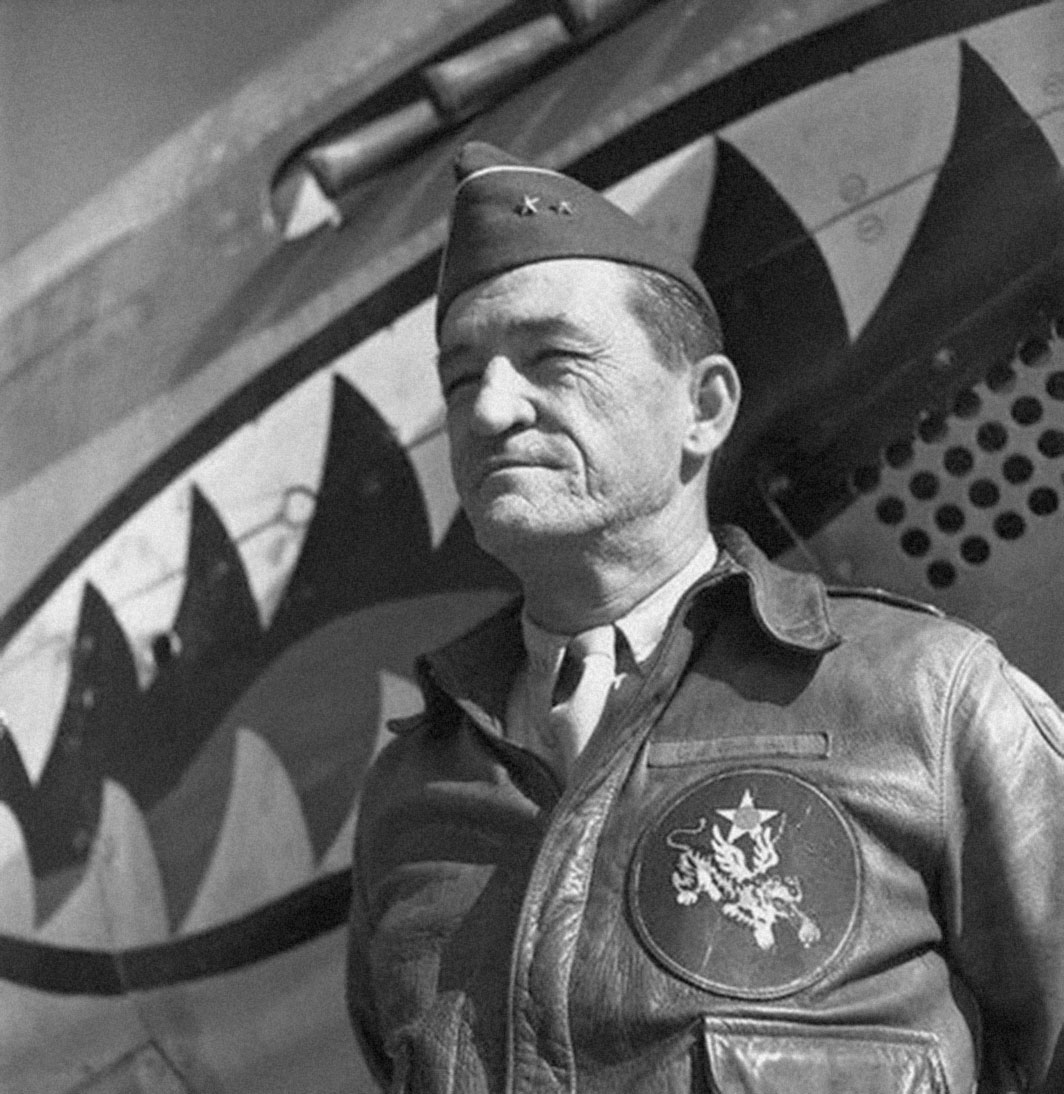
In 1950 General Chennault sold 40% of CAT to the CIA in an arrangement brokered by “China lobby” founder Thomas Corcoran and Paul Helliwell to enable CAT to continue the guns-and-drugs shipments. After Claire Chennault died in 1958, his first wife Nell Thompson inherited his share of Civil Air Transport. Nell soon sold her part of CAT to the CIA, which re-named it Air America. In 1959 Anna Chennault moved to Washington, D.C., where she served as a broadcaster for the Voice of America (1963-66) and an adviser to Radio Free Asia—both positions often held by CIA personnel.
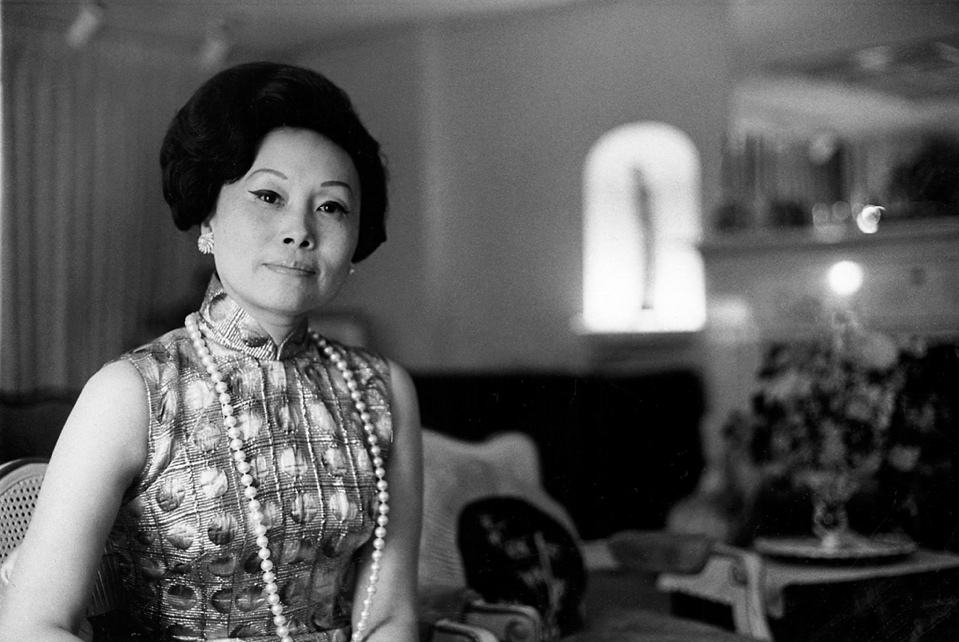
In Washington her male friend (“constant companion”) was Thomas Corcoran, who had helped broker the 1950 sale of half of CAT to the CIA. He was also the lobbyist for United Fruit in the early 1950s which instigated the CIA’s 1954 intervention in Guatemala.
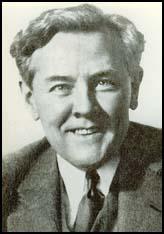
In 1962 Corcoran founded the Washington law firm Corcoran, Foley, Youngman and Rowe—filled with CIA heavyweights. Law partner Jim Rowe was a close friend of Clark Clifford, who wrote the CIA’s charter. Another member of Corcoran’s firm was Robert Amory, Jr. Amory had been the CIA’s Deputy Director of Intelligence from 1953 to 1962. During that time he had presided over the removal of a number of world leaders, through assassination or election intervention. After the Bay of Pigs invasion failed, JFK forced CIA Director Allen Dulles, Deputy Director Richard Bissell, and Robert Amory to resign from the CIA. Amory then joined Corcoran’s law firm. Corcoran’s lady-friend, Anna Chennault, was deeply connected to the CIA.
b. “The Chennault Affair”
Although the Paris peace talks began in May 1968, it was not until October that LBJ agreed to end U.S. air strikes on North Vietnam (a demand of Hanoi) and serious negotiations could begin. Johnson ordered the air strikes to stop on October 29, which caused support for Humphrey to rise. Between October 29 and November 1, however, the South Vietnamese government announced its withdrawal from the Paris peace talks, halting the peace process—and stopping Humphrey’s rise in the polls. The final pre-election Gallup poll reported Nixon with 42% and Humphrey with 40%.
Mrs. Chennault, a close friend of South Vietnamese ambassador Bui Diem, had convinced South Vietnamese officials that their government would receive a better deal from Nixon than from Humphrey and that they should therefore not support the Johnson peace initiative. Anna Chennault was also a close friend of South Vietnamese President Thieu’s brother Nguyen Van Kieu, then the South Vietnamese ambassador to Taiwan, and got the president of Taiwan to lean on Thieu. In addition, she somehow persuaded South Korean President Park Chung-hee to lean on Thieu. Remarkable! One would think that she would have needed serious help to accomplish such things. In any event, Anna Chennault succeeded in getting the South Vietnamese to withdraw from the Paris peace talks—and Humphrey slid in the polls.
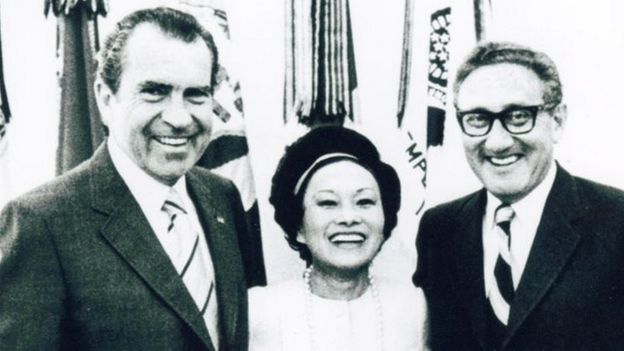
President Johnson reacted sharply to this turn of events and turned to Nixon for explanation, but Nixon claimed to know nothing of Mrs. Chennault’s doings. Humphrey accepted Nixon’s protest of innocence and did not blast him in the final pre-election days with charges of scuttling the peace talks. But the FBI had been wiretapping the South Vietnamese embassy in Washington and intercepting the embassy’s cables, and they informed LBJ about Anna Chennault’s calls to the embassy and to Saigon. Johnson accused Anna Chennault of costing Humphrey the election—and called it treason. Bui Diem said that he thought that she “may have played her own game in encouraging both the South Vietnamese and the Republicans.”
What really happened? In her 1985 interview with Herbert Parmet, Mrs. Chennault revealed that the full story had not been told. She said that there had also been couriers that the FBI did not know about, but she refused to identify them. Meaning there were other players involved. She also said that she did what she did at the request of “powerful men” in Washington—the CIA?[30]
20. Election day results—Nixon wins
On election day, November 5, Nixon won by less than 1% of the vote, receiving 31.8 million votes (43.4% of the total, 301 electoral votes). Humphrey received 31.3 million votes (42.7% of the total, 191 electoral votes), and George Wallace received 9.9 million votes (13.5% of the total, 46 electoral votes). McCarthy, who had been poised to win the election after the New Hampshire primary in March, received about 30,000 write-in votes—less than one vote in a thousand.

After the election Tom McCoy “cleaned up” McCarthy campaign finances (i.e., destroyed evidence). In 1973 when William Colby became director of the CIA, he brought McCoy back into the CIA as his close assistant.[31] Meaning that McCoy had been working for the CIA all along.
21. Conclusion
The author believes that the events recounted in this article (all of which were done by people closely connected with the CIA) were not coincidental happenings, but actions that were done at the direction of the CIA to influence the outcome of the 1968 election. Meaning that the CIA successfully subverted the 1968 U.S. presidential election and committed many crimes in the process. Since this happened more than 50 years ago and all those involved are likely dead, there can be no prosecution for the crimes committed, only a correction of our history.
Respect and decency require that the people of Liberty City be compensated for the great damage done to their community. And justice and truth demand that appropriate restitution be made to all Americans, especially Black Americans, for the murders of Martin Luther King, Jr., and Robert F. Kennedy.

-
On McCarthy’s campaign, see Albert Eisele, Almost to the Presidency: A Biography of Two American Politicians (Easton, CT: Piper Publishing, 1972); Ben Stavis, We Were the Campaign: New Hampshire to Chicago for McCarthy (Boston: Beacon Press, 1969); Eugene J. McCarthy, The Year of the People (Garden City, NY: Doubleday, 1969); and Jeremy Larner (McCarthy’s speech-writer), Nobody Knows: Reflections on the McCarthy Campaign of 1968 (New York: Macmillan, 1970). General sources for the 1968 election include Theodore White, The Making of the President 1968 (New York: Atheneum, 1969); Edward W. Knappman (ed.), Presidential Election 1968 (New York: Facts on File, 1970); and Lewis Chester, Godfrey Hodgson and Bruce Page (all of The London Times), An American Melodrama: The Presidential Campaign of 1968 (New York: Viking, 1969). ↑
-
On McCoy’s CIA service and attempts to join McCarthy’s campaign organization see Eisele, Almost to the Presidency, pp. 314ff.; and Stavis, We Were the Campaign, pp. 112ff. ↑
-
On Grace Stephens’s testimony, see Philip Melanson, Who Killed Martin Luther King? (Tucson, AZ: Odonian Press, 1993), p. 24; and Philip Melanson, The Murkin Conspiracy: The Investigation into the Assassination of Dr. Martin Luther King, Jr. (New York: Praeger, 1989). p. 93. Philip Melanson organized and chaired the Robert F. Kennedy Assassination Archives at the University of Massachusetts, Dartmouth. ↑
-
On Solomon Jones’s testimony, see Melanson, The Murkin Conspiracy, p. 85. ↑
-
After the HSCA report was released, Blakey and Committee Chairman Louis Stokes arranged to have all the committee’s back-up records, documents, investigative data, and unpublished transcripts locked up for 50 years. And Stokes requested the FBI and CIA to classify these items as “congressional materials” rather than as “agency materials,” making them beyond the reach of FOIA. See Melanson, The Murkin Conspiracy, Appendix C.
In addition, there seems to have been an effort to undermine the HSCA investigation. The investigator for the HSCA was Gaeton Fonzi, who was to interview all the witnesses at their homes before they appeared before the Select Committee. The seven most important witnesses regarding JFK (John Paisley, William Pawley, Dr. William Bryan, Charles Nicoletti, George de Mohrenschildt, Dr. Carlos Prio Saccaras, and William Sullivan) were each murdered a day or two before they were scheduled to meet with Gaeton Fonzi. See Gaeton Fonzi, The Last Investigation (New York: Basic Books, 1994). ↑
-
On Raoul’s phone numbers, see Melanson, The Murkin Conspiracy, pp. 50-51; and Mark Lane and Dick Gregory, Code Name “Zorro”: The Murder of Martin Luther King, Jr. (Englewood Cliffs, NJ: Prentice Hall, 1977), pp. 254-58. ↑
-
On Ray’s aliases, see Philip H. Melanson, Who Killed Martin Luther King? pp. 44-50 and 70-76. ↑
-
Philip H. Melanson, “The CIA’s Secret Ties to Local Police,” The Nation, March 26, 1983. ↑
-
Mark Lane and Dick Gregory, Code Name “Zorro,” pp. 266-67 on the destruction of the files. ↑
-
For a short account of Braden’s intelligence career, see G.J.A. O’Toole, Encyclopedia of American Intelligence and Espionage (New York: Facts on File, 1988), p. 76. ↑
-
On the French and Italian elections, see Thomas W. Braden, “I’m Glad the CIA is ‘Immoral,’” Saturday Evening Post, May 20, 1967, pp. 14ff.; and O’Toole, Encyclopedia of American Intelligence and Espionage, pp. 245-46. ↑
-
In addition, in 1950 Michael Josselson founded the Congress for Cultural Freedom to counter Stalinist influence in art and literature by funding non-Communist cultural, artistic, and intellectual movements. [On the CCF, see Frances Stonor Saunders, The Cultural Cold War: The CIA and the World of Arts and Letters (New York: New Press, 2000).] The CCF’s money came from the CIA (IO) and Braden ran the CIA end of the organization. IO also financed Irving Brown, Jay Lovestone, Walter Reuther, and George Meany to counter pro-Soviet stances in the AFL-CIO. AFL-CIO President Lane Kirkland was a friend of Tom Braden and sometimes spent Thanksgiving at the Bradens’ D.C.-area home (2009 obituary in the San Diego Union-Tribune). ↑
-
Braden tells about his role in starting the CIA’s subsidies of political parties and labor unions in his article “I’m Glad the CIA is ‘Immoral.’” ↑
-
On Merthan, see Aaron Latham, “Adversaria” column in Esquire magazine (December 1977), pp. 78 and 90. ↑
-
William Turner and Jonn Christian, The Assassination of Robert F. Kennedy: The Conspiracy and Coverup (New York: Random House, 1978), p. 190 on the slugless cartridges. Turner was an FBI agent for ten years. Turner and Christian were the first researchers to question all the on-scene witnesses and found that much key testimony had been omitted from the investigation’s report. The most important of this was that several eyewitnesses saw the second gunman. ↑
-
On Pena and Hernandez, see Turner and Christian, The Assassination of Robert F. Kennedy, pp. 63-67. ↑
-
On Dr. Bryan, see Philip H. Melanson, The Robert F. Kennedy Assassination: New Revelations on the Conspiracy and Cover-Up, 1968-1991 (New York: S.P.I. Books, 1994), pp. 201-206; and Turner and Christian, The Assassination of Robert F. Kennedy, pp. 225-229. ↑
-
On Dr. Simpson, see Turner and Christian, The Assassination of Robert F. Kennedy, pp. 199-202. ↑
-
On the destruction of evidence, see Philip H. Melanson, Who Killed Robert Kennedy?, pp. 17-18 ↑
-
Section 102 was supplemented by the CIA Act of 1949, which exempted the CIA from the normal congressional review process, and from disclosing its internal organization, etc. Victor Marchetti and John D. Marks, The CIA and the Cult of Intelligence (New York: Alfred A. Knopf, 1974), p. 8. ↑
-
On Maheu hiring Larry O’Brien, see Lawrence O’Brien, No Final Victories: A Life in Politics (Garden City, NY: Doubleday, 1974), pp. 255-6; and Robert Maheu and Richard Hack, Next to Hughes: Behind the Power and Tragic Downfall of Howard Hughes by His Closest Advisor (New York: HarperCollins, 1992), pp. 206-207. ↑
-
Jim Hougan, Spooks: The Haunting of America: The Private Use of Secret Agents (New York: William Morrow, 1978), p. 272, regarding Williams hiring Novello. ↑
-
Regarding the Ford Foundation grants, see The New York Times, February 13, 1969, p. 32; and February 21, pp. 1 and 25. ↑
-
On Braden diverting Mankiewicz, see “Washington’s Third Pair,” Time, August 15, 1969, p. 68; and Mary Bonnet, “Mankiewicz,” People, May 24, 1982. ↑
-
Christopher Hitchens, “Watergate – The Greek Connection,” The Nation, May 31, 1986, p. 759, on Tasca’s testimony. Hitchens gave evidence from Demetrocopoulos in the “Minority Report” column, The Nation, June 25, 1990, p. 882. ↑
-
Miami Herald, August 9, 1968, p. 2A, col. 6, on large riot by mid-afternoon of August 7. ↑
-
Miami Report, p. 10, on teenagers throwing pebbles, and p. 11 on Wallace-sticker car incident at 7:00 p.m. ↑
-
E. Howard Hunt, Undercover: Memoirs of an American Secret Agent (New York: Berkley, 1974), p. 42. Both served in OSS Detachment 202 in Kunming, China. Helliwell commanded the unit until 1944. ↑
-
Major sources for Helliwell include O’Toole, Encyclopedia of American Intelligence and Espionage; Peter Dale Scott, American War Machine: Deep Politics, the CIA Global Drug Connection, and the Road to Afghanistan (Lanham, MD: Rowman & Littlefield, 2014); Jonathan Kwitny, The Crimes of Patriots: A True Tale of Dope, Dirty Money and the CIA (New York: Touchstone, 1987); and Alan A. Block, Masters of Paradise: Organized Crime and the Internal Revenue Service in The Bahamas (Abingdon, UK: Routledge, 1991). Dr. Block is professor in the Administration of Justice Department at Penn State University. Dr. Scott teaches at UC Berkeley. His 1991 work Cocaine Politics, co-written with Jonathan Marshall, is the major in-depth account of CIA-Contra cocaine-trafficking to America. Jonathan Kwitny was then the Wall Street Journal’s main reporter for the Far East. His 1987 work, The Crimes of Patriots, is the major account of the Nugan-Hand drug-bank scandal. ↑
-
Accounts of the Chennault affair are given in Theodore White, The Making of the President 1968, pp. 444-45 and 446-47n.; Carl Solberg, Hubert Humphrey: A Biography (Nepean, ONT: Borealis, 1984), pp. 394-95; Anna Chennault, The Education of Anna (New York: Times Books, 1980), pp. 188-96; Bui Diem and David Chanoff, In the Jaws of History (Boston: Houghton Mifflin, 1987), pp. 241-44; Thomas Powers, The Man Who Kept the Secrets: Richard Helms and the CIA (New York: Alfred A. Knopf, 1979), pp. 225-28; Lyndon B. Johnson, The Vantage Point: Perspectives of the Presidency, 1963-1969 (New York: Holt, Rinehart and Winston, 1971), pp. 513-29; and William Safire, Before the Fall: An Inside View of the Pre-Watergate White House (Garden City, NY: Doubleday, 1975), pp. 88ff. Safire’s account is the most complete. ↑
-
Thomas Powers, The Man Who Kept the Secrets, p. 333. ↑
CovertAction Magazine is made possible by subscriptions, orders and donations from readers like you.
Blow the Whistle on U.S. Imperialism
Click the whistle and donate
When you donate to CovertAction Magazine, you are supporting investigative journalism. Your contributions go directly to supporting the development, production, editing, and dissemination of the Magazine.
CovertAction Magazine does not receive corporate or government sponsorship. Yet, we hold a steadfast commitment to providing compensation for writers, editorial and technical support. Your support helps facilitate this compensation as well as increase the caliber of this work.
Please make a donation by clicking on the donate logo above and enter the amount and your credit or debit card information.
CovertAction Institute, Inc. (CAI) is a 501(c)(3) non-profit organization and your gift is tax-deductible for federal income purposes. CAI’s tax-exempt ID number is 87-2461683.
We sincerely thank you for your support.
Disclaimer: The contents of this article are the sole responsibility of the author(s). CovertAction Institute, Inc. (CAI), including its Board of Directors (BD), Editorial Board (EB), Advisory Board (AB), staff, volunteers and its projects (including CovertAction Magazine) are not responsible for any inaccurate or incorrect statement in this article. This article also does not necessarily represent the views the BD, the EB, the AB, staff, volunteers, or any members of its projects.
Differing viewpoints: CAM publishes articles with differing viewpoints in an effort to nurture vibrant debate and thoughtful critical analysis. Feel free to comment on the articles in the comment section and/or send your letters to the Editors, which we will publish in the Letters column.
Copyrighted Material: This web site may contain copyrighted material the use of which has not always been specifically authorized by the copyright owner. As a not-for-profit charitable organization incorporated in the State of New York, we are making such material available in an effort to advance the understanding of humanity’s problems and hopefully to help find solutions for those problems. We believe this constitutes a ‘fair use’ of any such copyrighted material as provided for in section 107 of the US Copyright Law. You can read more about ‘fair use’ and US Copyright Law at the Legal Information Institute of Cornell Law School.
Republishing: CovertAction Magazine (CAM) grants permission to cross-post CAM articles on not-for-profit community internet sites as long as the source is acknowledged together with a hyperlink to the original CovertAction Magazine article. Also, kindly let us know at info@CovertActionMagazine.com. For publication of CAM articles in print or other forms including commercial internet sites, contact: info@CovertActionMagazine.com.
By using this site, you agree to these terms above.
About the Author
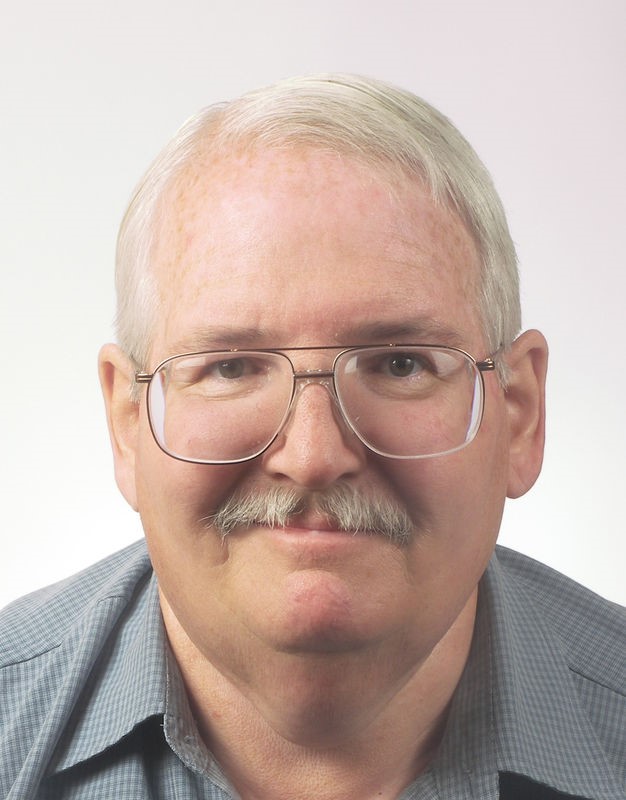
Robert Aldridge was raised as an “Army brat” (his father was a POW under the Japanese for 3½ years during WWII) and graduated from the University of Central Florida in 1979 (B.A. History and Political Science). He now lives in Los Angeles, where he formerly worked for the Abstract Expressionist artist Sam Francis.
In the early 1990s, being outraged at the CIA’s involvement in the Contras’ cocaine-trafficking, he began researching the CIA’s larger role in international drug-trafficking. This soon expanded to include the CIA’s domestic activities (common cast of characters). In 1999 he published “The Lost Ending of the Didache” (Vigiliae Christianae, Feb. 1999), which revealed the missing ending of a very early Christian writing.
In 2011 he wrote The First Gospel, which tells the story of the first Christian writing, the Aramaic gospel Melê d-Māran. In 2015 he wrote The Aramaic Hypothesis, which makes corrections to the text of the four gospels based on the Aramaic substratum. In 2018 he created the DVD The Story of Illegal Drugs in America to encourage young people not to use illegal drugs.
Robert can be reached at sgc.radio2@gmail.com.

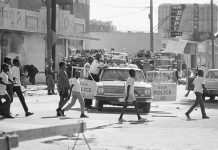

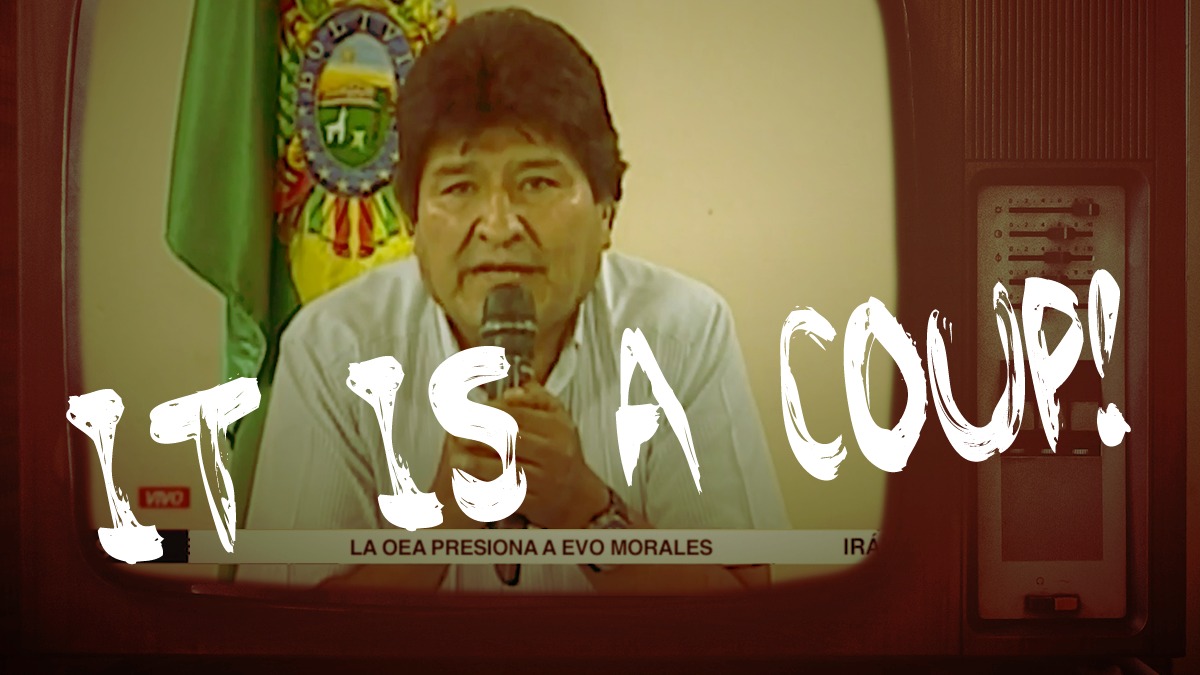




[…] From here, on the CIA rigging the 1968 election: […]
[…] From here, on the CIA rigging the 1968 election: […]
Excellent, Robert. Absolutely excellent!
It boggles the mind to think how different our history might have been except for the machinations of these anti-democratic interlopers.
[…] Em 30 de novembro de 1967, o senador Eugene McCarthy (D-MN) anunciou publicamente sua intenção de concorrer como candidato da paz contra Johnson na corrida presidencial de 1968. Naquela época, McCarthy estava se tornando um herói entre os estudantes universitários por causa de sua oposição aberta à Guerra do Vietnã. Curtis Gans e Allard K. Lowenstein, que haviam iniciado o movimento Dump Johnson em 1967, tornaram-se figuras importantes na nova organização de campanha de McCarthy. [1] […]
I actually have obtained $19700 merely a month just working parttime at home. Just when I lost my previous post, I was so disturbed and eventually I’ve searched this simple online job & in this way I am capable to get thousand USD from my home. Anyone can certainly get this chance and may collect more dollars on-line by going following internet-web site….
>>> https://brightfuture241.blogspot.com/
[…] Did the CIA Subvert the 1968 U.S. Presidential Election? by Robert E. Aldridge […]
[…] A fonte original deste artigo é CovertAction Magazine […]
[…] A fonte original deste artigo é CovertAction Magazine […]
[…] the U.S. military and created the CIA, and Section 102 is often called “the CIA’s charter.”[20] Section 102 was drawn up by the law firm of President Truman’s closest adviser, Clark Clifford. […]
[…] CovertAction Magazine […]